Your development efforts don’t have to become a battle between encouraging gifts today versus those that will be completed over time. With a little ingenuity, the two concepts can be successfully communicated at the same time. Here are the pros and cons of several ideas for marketing seemingly conflicting gift options in a cooperative, rather than competing, fashion:
Use planned giving inserts in gift receipts and donor acknowledgments.
PRO Planned giving message reaches all active donors at a time when they have just made a decision to support your organization or institution. As this communication is part of a “thank you” rather than an “ask,” it offers an excellent opportunity to be of service in suggesting ways to make gifts that feature additional benefits for the donor and the charitable recipient.
CON Reaches some donors who may not be the most likely to make or be capable of making planned gifts and does not reach those who may have recently lapsed and be at the very point in life when they are making plans for bequests and other gifts from their estates.
Publish planned giving ads and articles in other organizational publications.
PRO A cost-effective way to educate constituents on planned giving opportunities.
CON With the limited space and the broad audience of many organizational magazines and program newsletters, the planned giving ad or article will need to be very general and, therefore, may not be able to focus on some of the more specialized planned gift vehicles available. The natural audience for bequests, charitable gift annuities, and other gifts may be relatively narrow. Where it is necessary to use dollar figures in examples, it is also a challenge not to “overshoot” or “undershoot” your market with examples that are too large or too small for many readers.
Present planned giving materials at board meetings and special events.
PRO You have a captive and generally highly motivated audience who are interested in your organization and ways they can help it.
CON Your audience members may be younger or may be considering current gifts and, therefore, may not be at the right point in their lives or may be distracted from plans for gifts that would otherwise be received in the near term–so stay low-key.
Add planned gift tag lines to your stationery.
PRO Including a phrase such as “Consider including ________ in your will or trust” on your letterhead and other appropriate communications pieces reminds donors that planned gifts are appreciated by your organization.
CON The phrase may not fit in with your current stationery design or it may have to be printed in a very small type, which would make it less effective for older readers.
In current gift solicitations, use wallet flap envelopes that include check-off requests for planned giving information.
PRO Repeats planned giving message in a format that should not compete with solicitation of current gifts. The reader will typically not encounter the message in this format until after the decision to make a current gift has been made.
CON Some may believe that any such appeal will conflict with the primary current gift appeal. Wallet flap envelopes can be more costly than regular return envelopes and the response rate may be generally low.

